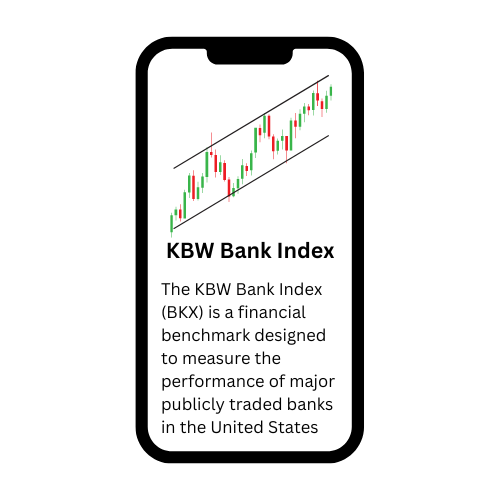In finance, the term “animal spirits” refers to the emotional and psychological factors that influence investors’ and consumers’ economic decisions. Coined by economist John Maynard Keynes in his 1936 work The General Theory of Employment, Interest, and Money, animal spirits describe the instincts, proclivities, and emotions that drive human behaviour in the economic sphere, beyond rational calculations. This concept underscores the role of confidence, fear, and optimism in shaping market dynamics and economic activity. For instance, high levels of consumer confidence might lead to increased spending and investment, whereas widespread fear or pessimism can result in reduced economic activity. Understanding animal spirits is crucial for grasping how market sentiment can impact economic fluctuations and business cycles.
What Are Animal Spirits?
- Animal spirits refer to the instincts, emotions, and psychological factors that drive human behaviour in financial and economic contexts. Introduced by economist John Maynard Keynes, the term describes the non-rational elements that influence economic decision-making, such as confidence, fear, and optimism.
- Unlike purely rational calculations, animal spirits capture the unpredictable and often irrational impulses that can affect market trends and economic conditions. For example, a surge in consumer optimism may lead to increased spending and investment, while widespread fear can prompt a pullback in economic activity.
- Understanding animal spirits is essential for analyzing market behaviour, as these emotional and psychological factors can significantly impact financial markets and economic cycles.
The Origin of the Term
- The term “animal spirits” was popularized by the British economist John Maynard Keynes in his seminal 1936 work, The General Theory of Employment, Interest, and Money. Keynes used the phrase to describe the non-rational and instinctive aspects of human behaviour that affect economic decision-making, beyond the realm of pure logic and rationality.
- He drew on the concept to explain how psychological factors and emotional responses, such as confidence and fear, can significantly influence market dynamics and economic activity. The term evokes the idea that these emotional and intuitive forces are as vital to understanding economic fluctuations as more quantifiable factors.
- Keynes’s use of “animal spirits” highlighted the importance of these subjective influences in shaping economic outcomes and provided a framework for analyzing how mood and sentiment can drive economic behaviour.
Keynes and Animal Spirits
- John Maynard Keynes, a pioneering economist, introduced the concept of “animal spirits” in his influential 1936 work, The General Theory of Employment, Interest, and Money. Keynes used the term to describe the emotional and psychological factors that drive economic decision-making, which he believed were crucial in understanding economic fluctuations and market behaviour.
- According to Keynes, animal spirits encompass the instinctive and non-rational elements of human behaviour—such as confidence, fear, and optimism—that influence investors’ and consumers’ actions. He argued that these factors often override purely logical and mathematical considerations, leading to fluctuations in economic activity and market trends.
- By incorporating animal spirits into his theory, Keynes emphasized the importance of psychological and emotional influences in shaping economic outcomes, thus broadening the understanding of economic dynamics beyond classical economic theories based solely on rational behaviour.
Animal Spirits in Modern Economics
- Influence on Market Behaviour: In modern economics, animal spirits continue to be recognized for their significant impact on market behaviour and economic cycles. They reflect how psychological factors, such as investor sentiment and consumer confidence, can drive market trends and economic fluctuations.
- Economic Policy and Decision-Making: Policymakers and central banks incorporate the concept of animal spirits to better understand and manage economic conditions. Recognizing the role of confidence and fear helps in designing policies that aim to stabilize markets and foster economic growth.
- Behavioural Economics: The study of animal spirits has contributed to the field of behavioural economics, which explores how psychological factors and cognitive biases influence financial decisions. This field examines how irrational behaviour, and emotional responses affect economic outcomes.
- Financial Crises and Booms: Animal spirits are particularly relevant in analyzing financial crises and economic booms. Periods of excessive optimism or pessimism can lead to bubbles or recessions, demonstrating the power of psychological factors in shaping economic events.
- Investor Sentiment: Modern financial analysts and economists monitor investor sentiment indicators, such as surveys and market indices, to gauge the influence of animal spirits on market dynamics and economic trends.
Psychological Factors Behind Animal Spirits
- Confidence and Optimism: Confidence and optimism play a crucial role in animal spirits, as positive outlooks on the economy can lead to increased consumer spending and investment. When people feel secure and hopeful about future economic prospects, they are more likely to make financial commitments and take risks.
- Fear and Anxiety: Conversely, fear and anxiety can significantly dampen economic activity. When consumers and investors are worried about economic downturns or financial instability, they may reduce spending, delay investments, and seek safer assets, leading to slower economic growth.
- Herd Behaviour: Psychological tendencies such as herd behaviour, where individuals follow the actions of others rather than making independent decisions, can amplify market trends. This behaviour can contribute to market bubbles or crashes, as large groups of people react similarly to economic signals.
- Overconfidence Bias: Overconfidence bias can lead investors to underestimate risks and overestimate their knowledge or abilities, potentially fuelling speculative behaviour and contributing to market volatility. This overconfidence can result in irrational investment decisions and financial instability.
- Loss Aversion: Loss aversion, a principle from behavioural economics, describes how people experience losses more intensely than gains of the same size. This psychological factor can influence decision-making, leading individuals to avoid risks and impact market dynamics during uncertain times.
Impact of Animal Spirits on Financial Markets
- Animal spirits have a profound impact on financial markets by shaping investor behaviour and market dynamics through emotional and psychological influences. Positive animal spirits, marked by high confidence and optimism, can drive market rallies as investors are more willing to buy stocks and other assets, believing in continued economic growth and favourable conditions.
- This optimism can lead to increased market valuations and speculative behaviour, potentially resulting in asset bubbles. Conversely, negative animal spirits, characterized by fear and pessimism, can lead to market downturns as investors may sell off assets in anticipation of worsening economic conditions or financial instability.
- Such sentiment-driven selloffs can exacerbate market declines and contribute to financial crises. Additionally, shifts in investor sentiment can lead to volatility, as markets react sharply to changes in mood and expectations.
- Understanding the impact of animal spirits on financial markets is crucial for investors and policymakers alike, as it highlights the interplay between psychological factors and market movements, influencing investment strategies and economic policy decisions.
Animal Spirits and Consumer Behaviour
- Animal spirits significantly influence consumer behaviour by affecting how individuals perceive and respond to economic conditions based on their emotions and psychological states. When consumer confidence is high—often fuelled by optimism and positive economic expectations—people are more likely to increase their spending, invest in big-ticket items, and engage in economic activities that stimulate growth. This behaviour can drive up demand for goods and services, contributing to economic expansion.
- Conversely, during periods of low confidence or heightened fear, consumers may become more cautious, reducing their spending and saving more to mitigate perceived risks. This cautious behaviour can slow down economic activity and potentially lead to economic downturns.
- The impact of animal spirits on consumer behaviour underscores the importance of psychological factors in shaping economic cycles and highlights how fluctuations in confidence and sentiment can have tangible effects on overall economic performance.
The Role of Animal Spirits in Economic Cycles
- Animal spirits play a pivotal role in economic cycles by influencing the fluctuations in economic activity through changes in investor and consumer sentiment. During periods of high animal spirits, characterized by strong confidence and optimism, economic activity typically accelerates.
- Consumers and businesses are more inclined to spend, invest, and expand, driving growth and leading to economic booms. This positive sentiment can result in increased demand for goods and services, higher asset prices, and robust economic performance.
- However, when animal spirits turn negative, marked by fear and pessimism, economic activity often contracts. Consumers and investors may pull back on spending and investment, leading to reduced demand, falling asset prices, and potentially triggering recessions.
- These cyclical shifts highlight how psychological factors and emotional responses can cause self-reinforcing cycles of economic expansion and contraction. The understanding of animal spirits thus provides valuable insights into the underlying forces driving economic cycles and helps in forecasting and managing economic fluctuations.
Case Studies of Animal Spirits in Action
- The Dot-Com Bubble (1990s-2000): During the late 1990s, exuberant optimism about the potential of the internet led to a speculative frenzy in technology stocks. Investors, driven by high animal spirits, poured capital into tech companies with little regard for their profitability. This speculative bubble inflated asset prices dramatically until it burst in 2000, resulting in a sharp market correction and significant financial losses.
- The Global Financial Crisis (2007-2008): Leading up to the financial crisis, excessive optimism and overconfidence in the housing market and financial instruments fuelled a housing bubble. Investors and consumers, driven by overly positive animal spirits, engaged in risky lending and investment practices. When the bubble burst, widespread fear and panic ensued, leading to a severe economic downturn and a global financial crisis.
- The COVID-19 Pandemic (2020): The onset of the COVID-19 pandemic saw a dramatic shift in animal spirits. Initially, fear and uncertainty caused a sharp decline in market activity and consumer spending. However, as governments implemented stimulus measures and vaccine rollouts began, optimism surged, leading to a rapid rebound in financial markets and consumer confidence. The subsequent recovery highlighted how shifts in sentiment can influence economic and market behaviour.
Criticisms and Limitations
- The concept of animal spirits, while influential, faces several criticisms and limitations in economic theory and practice. One major criticism is the difficulty in quantifying and measuring animal spirits, as they are inherently subjective and influenced by a wide range of psychological and emotional factors.
- This lack of precise measurement can complicate empirical analysis and make it challenging to incorporate animal spirits into predictive economic models. Additionally, critics argue that focusing on animal spirits may overshadow other important factors, such as structural economic changes or policy interventions, that also impact economic behaviour.
- Furthermore, some economists contend that the concept of animal spirits can lead to a deterministic view of market behaviour, where psychological factors are seen as the primary drivers of economic cycles, potentially overlooking the role of rational decision-making and systemic factors.
- Despite these criticisms, understanding animal spirits remains valuable for capturing the complex interplay between psychology and economics, but it should be considered alongside other analytical tools and frameworks to gain a comprehensive view of economic dynamics.
Conclusion
- In conclusion, animal spirits—rooted in psychological and emotional factors—play a critical role in shaping economic behaviour and influencing financial markets. By capturing the essence of confidence, fear, optimism, and other emotional drivers, the concept provides valuable insights into how non-rational factors can affect economic cycles, market trends, and consumer behaviour.
- While the concept of animal spirits has enriched our understanding of economic dynamics beyond purely rational models, it also faces criticisms related to its measurement and the potential overshadowing of other significant factors.
- Despite these limitations, recognizing the impact of animal spirits helps explain the complexities of economic fluctuations and market volatility, underscoring the importance of incorporating psychological and emotional dimensions into economic analysis.
- A nuanced approach that integrates animal spirits with other economic theories and empirical evidence can offer a more comprehensive understanding of market behaviour and economic activity, ultimately aiding policymakers, investors, and economists in navigating the intricacies of the economic landscape.







